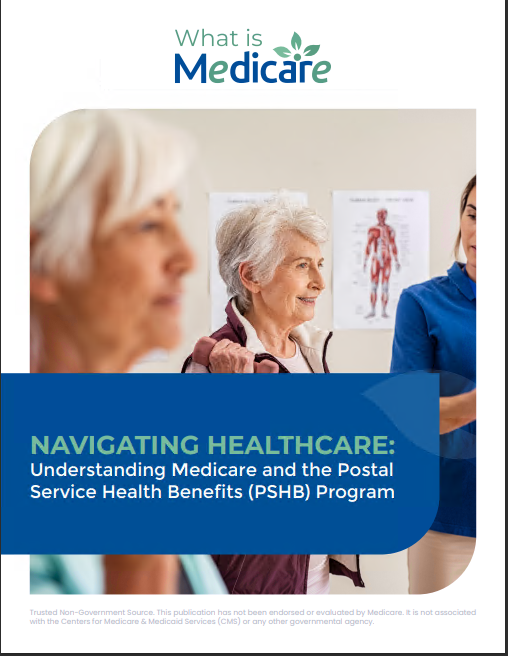Key Takeaways:
-
Medicare Part D offers an essential way to manage prescription costs by covering a wide range of medications, ensuring more predictable pharmacy expenses.
-
Understanding eligibility and enrollment periods for Medicare Part D is key to maximizing the benefits and avoiding penalties for late enrollment.
Wondering About Medicare Part D? Here’s the Lowdown on How It Could Help with Your Prescription Costs
Medicare Part D is the prescription drug coverage component of Medicare, designed to help enrollees manage the often unpredictable costs of medications. As healthcare expenses continue to rise, especially for prescription drugs, many seniors and eligible individuals find Part D a valuable tool for accessing the medications they need without financial strain. But how exactly does Medicare Part D work, and what should you know about its coverage in 2024? In this article, we’ll walk through the essentials of Medicare Part D and how it could make a big difference in your prescription costs.
What Is Medicare Part D?
Medicare Part D is an optional prescription drug benefit available to anyone who is enrolled in Medicare Part A or Part B. This coverage is offered through private insurance companies approved by Medicare, meaning that while it is regulated by Medicare, the actual plans are managed by private companies.
Part D helps cover the cost of both brand-name and generic drugs. Each plan comes with its own list of covered medications (known as a formulary), but most include a wide range of commonly prescribed drugs for various medical conditions. Depending on your medication needs, Part D can provide substantial savings, particularly for those who require long-term or expensive treatments.
Eligibility for Medicare Part D
To be eligible for Medicare Part D, you need to be enrolled in either Medicare Part A or Part B. Most people become eligible for Medicare once they turn 65, though younger individuals with certain disabilities or conditions like end-stage renal disease (ESRD) may also qualify.
If you are newly eligible for Medicare, you have a seven-month Initial Enrollment Period (IEP) to sign up for Part D. This window includes the three months before your 65th birthday, the month of your birthday, and three months afterward. Missing this window can result in penalties unless you have other credible prescription drug coverage.
Understanding the Coverage Phases
Medicare Part D plans follow a standard model divided into several coverage phases. Understanding these phases helps you anticipate your out-of-pocket costs over the course of the year.
-
Deductible Phase: This is the amount you pay out of pocket before your plan starts covering a portion of your drug costs. In 2024, the maximum deductible is expected to be around $545, although this can vary by plan.
-
Initial Coverage Phase: Once your deductible is met, you enter this phase, where you pay a copayment or coinsurance for each prescription. The plan covers the rest until you reach a certain spending threshold.
-
Coverage Gap (Donut Hole): After reaching the spending threshold (approximately $5,030 in 2024), you enter the coverage gap. In this phase, you pay a larger portion of drug costs (typically 25% for both brand-name and generic drugs). However, thanks to reforms, the gap has been significantly reduced compared to previous years.
-
Catastrophic Coverage: Once your out-of-pocket spending reaches $8,000, you enter the catastrophic coverage phase, where your copays are dramatically reduced for the rest of the year.
Avoiding the Late Enrollment Penalty
If you don’t sign up for Medicare Part D during your IEP and you don’t have other credible drug coverage (like from an employer), you could face a late enrollment penalty. This penalty is a lifetime addition to your premium, increasing the longer you go without prescription drug coverage. The penalty is calculated as 1% of the national base beneficiary premium for each full month that you were eligible but didn’t enroll.
The longer you wait to enroll, the higher the penalty. To avoid this, it’s crucial to review your prescription needs as you approach Medicare eligibility and decide whether Part D makes sense for you.
Special Enrollment Periods and Extra Help Programs
Even if you miss your initial enrollment window, there are special enrollment periods (SEPs) during which you can sign up for Medicare Part D without facing penalties. These SEPs are triggered by certain life events, such as moving out of your plan’s service area or losing other prescription drug coverage. It’s important to keep these windows in mind to avoid unnecessary penalties and coverage gaps.
For individuals with limited income and resources, the Extra Help program offers assistance in paying for Medicare Part D premiums, deductibles, and copayments. Those who qualify can save thousands of dollars annually on prescription drug costs. The eligibility criteria are based on your income and assets, but the program can significantly reduce the financial burden of medication costs.
What Drugs Are Covered?
Each Medicare Part D plan has its own formulary, which is a list of drugs that the plan covers. While formularies vary by plan, they are generally organized into tiers, with drugs in lower tiers costing less than those in higher tiers. For instance, generic drugs might be in Tier 1, while specialty drugs could be in Tier 4 or 5.
It’s important to review the formulary of any Part D plan you are considering, especially if you take specific medications. Some plans may require prior authorization, step therapy, or have quantity limits for certain drugs, so it’s critical to understand the rules that apply to your prescriptions.
Choosing the Right Plan
With numerous Part D plans available, it can be overwhelming to decide which one is right for you. It’s essential to compare plans based on factors like:
- Drug coverage: Does the plan cover your current medications?
- Costs: What are the plan’s premiums, deductibles, and copayments?
- Pharmacy network: Does the plan work with the pharmacies you use?
- Star ratings: Medicare assigns star ratings to Part D plans based on quality and customer satisfaction. Plans with higher star ratings tend to offer better service and value.
To simplify this process, you can use the Medicare Plan Finder tool on Medicare.gov to compare plans based on your specific needs.
How Does Medicare Part D Work with Other Insurance?
If you have other forms of insurance—such as employer coverage, Veterans Affairs (VA) benefits, or Medicaid—your Medicare Part D plan may coordinate with these benefits. It’s important to understand how the different plans interact to avoid paying more than necessary or having gaps in coverage.
For instance, if you have both Medicare and Medicaid, you are automatically enrolled in a Medicare Part D plan unless you choose a different one. If you have employer-sponsored coverage, you may be able to delay enrolling in Part D without facing penalties, as long as your coverage is considered credible.
Staying Informed About Changes to Medicare Part D
Each year, there can be updates to Medicare Part D, including changes to the deductible, copayment amounts, and coverage gap thresholds. Staying informed about these changes is important for managing your healthcare budget and making the most of your Medicare benefits. Reviewing your plan annually during the Medicare Open Enrollment Period (October 15 to December 7) ensures that you’re still in the best plan for your prescription needs.
Final Thoughts on Medicare Part D
Medicare Part D plays a crucial role in managing prescription drug costs, providing peace of mind for those who rely on daily medications. With numerous plans available, understanding the basics of how Part D works, when to enroll, and how to choose the right plan is essential to making informed healthcare decisions. By staying proactive and reviewing your coverage regularly, you can avoid unnecessary expenses and ensure that your prescription needs are met.










